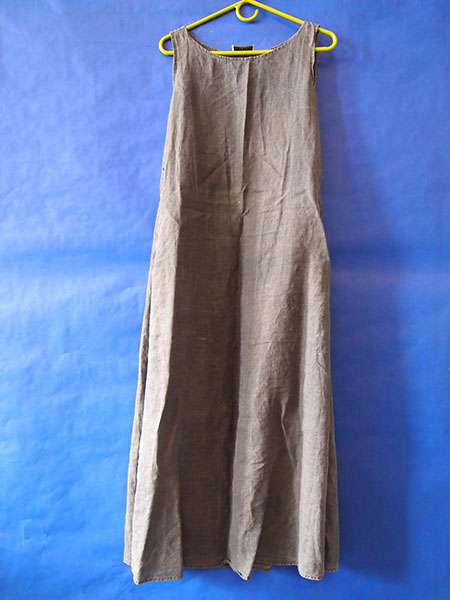![]() body | color | collections | commodity | cube | document | fabric | fetish | gender | glass | home | identity | living | machine | metal | minimal | mobility | narrative | olfactory | organic |
body | color | collections | commodity | cube | document | fabric | fetish | gender | glass | home | identity | living | machine | metal | minimal | mobility | narrative | olfactory | organic |
![]() pain | paper | plastic | plugs | power | protective | rectangular | ritual | round | sound | souvenir | spiritual | style | text-based | time | tool | touch | uniform | value | visual | warm | wood
pain | paper | plastic | plugs | power | protective | rectangular | ritual | round | sound | souvenir | spiritual | style | text-based | time | tool | touch | uniform | value | visual | warm | wood
| Clothing: Gray Long Dress | |||
Narrative: Lat Naylor Think Tank Gifted to me from a stranger after an exhibition at White Box in New York. Propagation of sisal is generally by using bulbils produced from buds in the flower stalk or by suckers growing around the base of the plant, which are grown in nursery fields until large enough to be transplanted to their final position. These methods offer no potential for genetic improvement. Invitro multiplication of selected genetic material using meristematic tissue culture (MST) offers considerable potential for the development of improved genetic material. Global production of sisal fibre in 2007 amounted to 240 thousand tonnes of which Brazil, the largest producing country, produced 113,000 tonnes. Tanzania produced approximately 37,000 tons, Kenya produced 27,600 tonnes, Venezuela 10,500 tonnes and 9,000 tonnes were produced in Madagascar. China contributed 40,000 tons with smaller amounts coming from South Africa, Mozambique, Haiti, and Cuba. Sisal occupies 6th place among fibre plants, representing 2% of the world’s production of plant fibres (plant fibres provide 65% of the world’s fibres). As one of the world's important natural fibres, sisal is covered by activities of the International Year of Natural Fibres 2009.
|
 |
||
![]()
